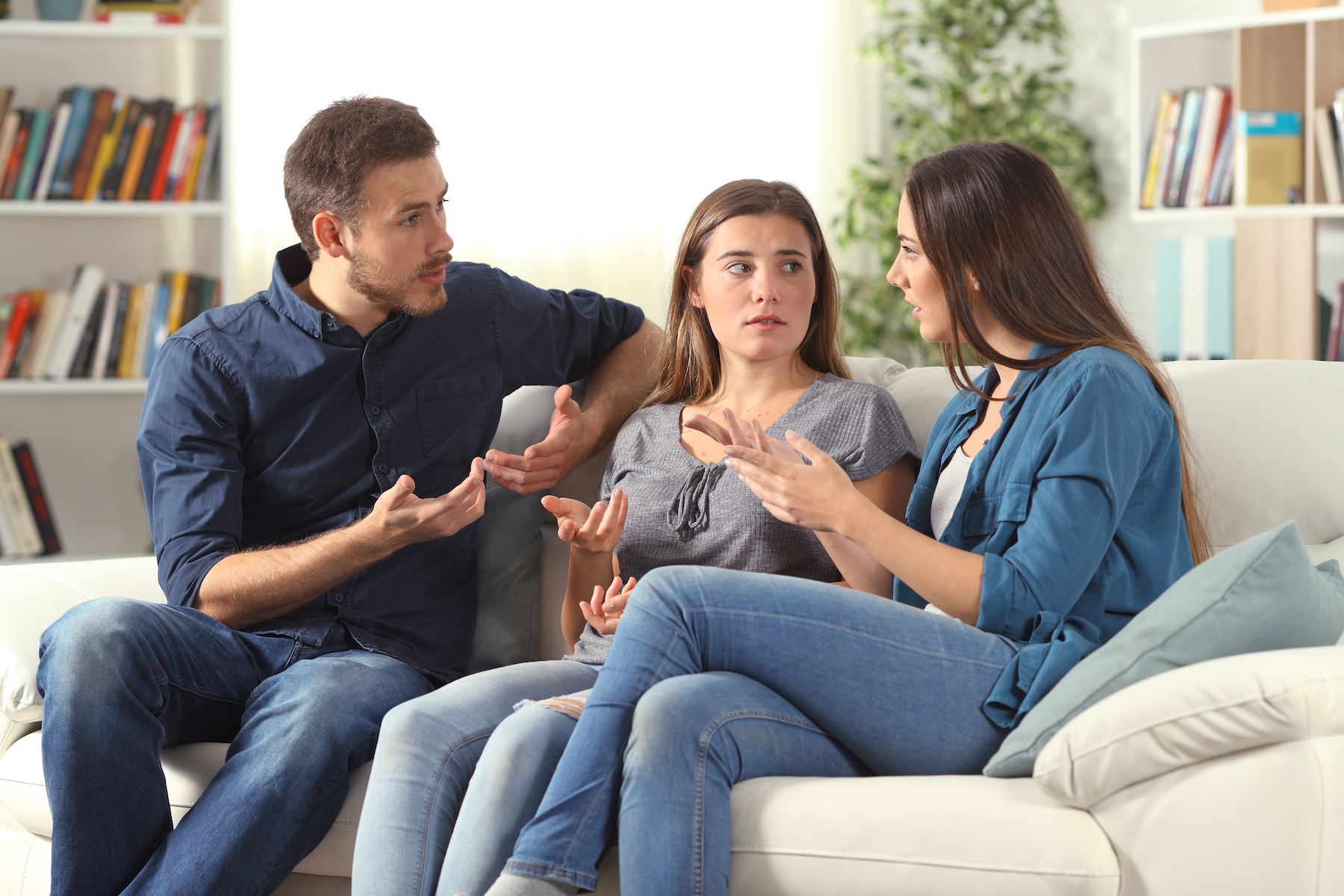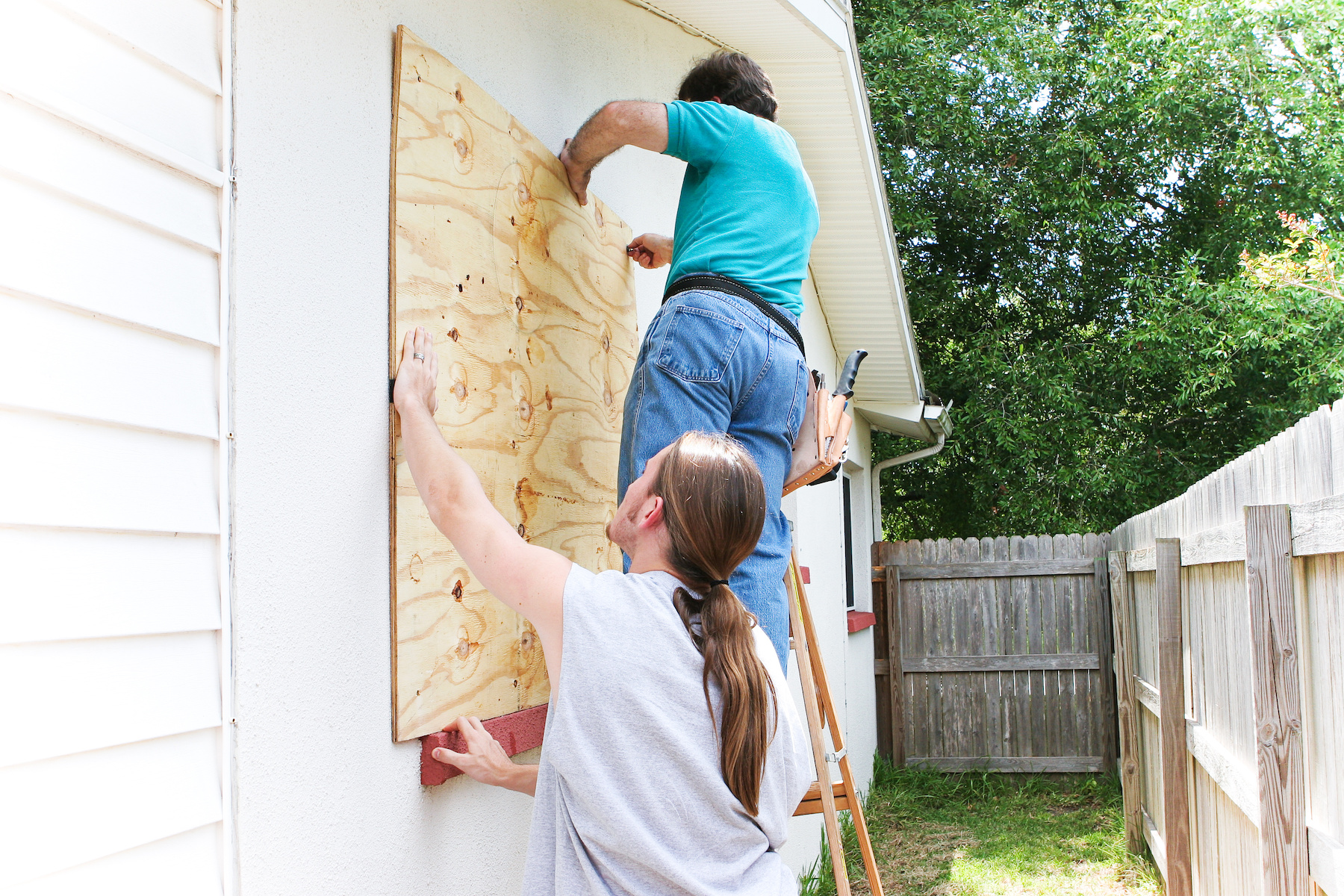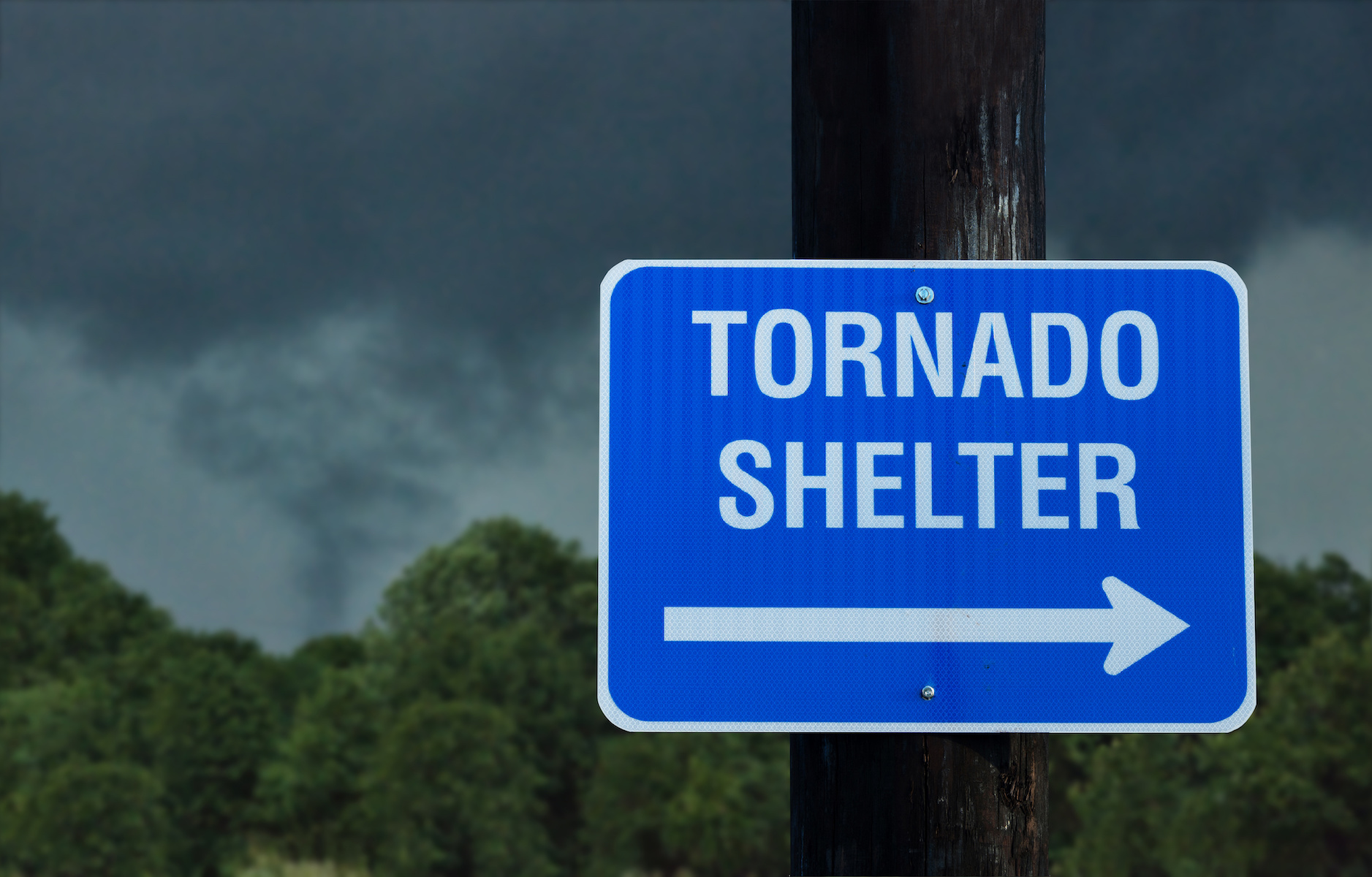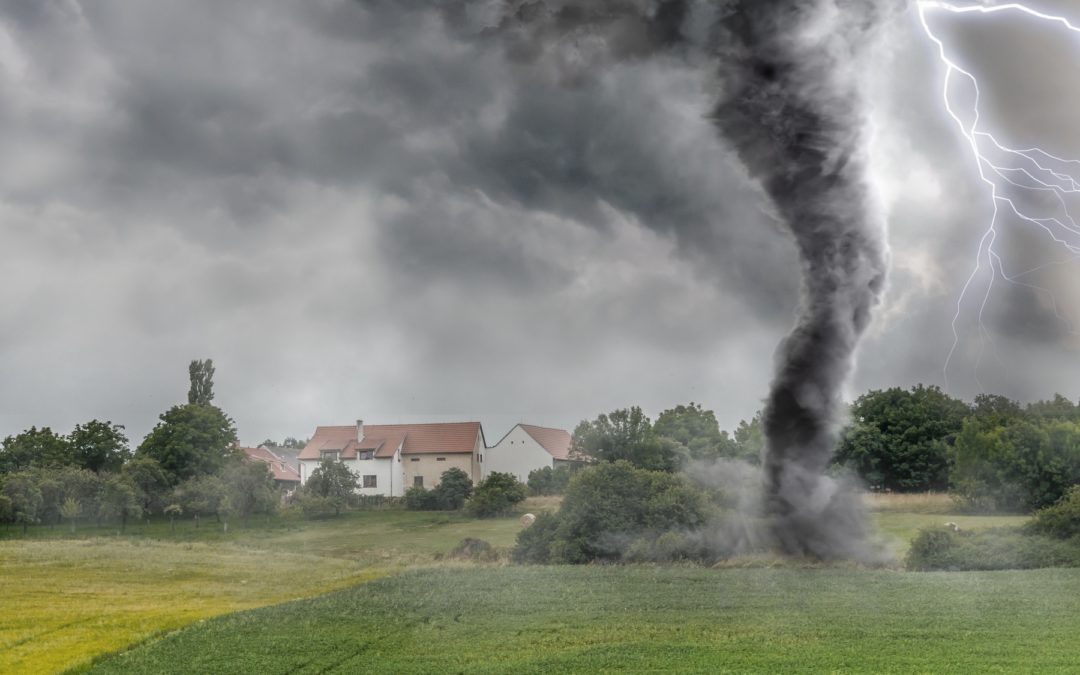Tornadoes pose a serious threat to anything and anyone in their path. They can create deadly flying debris, destroy buildings and homes, cause injuries, or worse. Each year in the United States, there are an average of 1,000 recorded tornadoes, resulting in over 1,500 injuries and 80 deaths.
For that reason, it is important to take the necessary precautions to keep yourself safe when a tornado occurs. Whenever there’s a severe weather warning, you should immediately be alert in case the warning level increases.
It’s recommended that your household has enough food and water to last a minimum of three days in case power is lost. If there’s no time to adequately prepare, you should have an emergency kit with essential items like canned goods, bottled water, and medical supplies nearby.
Additionally, follow these safety precautions on how to stay secure before, during, and after a tornado:
Before
- Find out your community’s tornado risk. Tornadoes are most common in the Midwest and the Southeast United States.
- Design a disaster preparedness plan for your family, and create an emergency kit. Designate an area to seek shelter and where to meet after a disaster. Practice a tornado drill at least once a year. Be prepared to protect your pets in an emergency, too.

Be sure to talk with your family to prepare for severe weather.
- Recognize the signs of a tornado. Indicators include rotating clouds, whirling dust or debris on the ground, and a loud, continuous roar.
- Know the difference between a tornado watch and a tornado warning. A watch is when the conditions are right for tornadoes to form, and a tornado warning means the approach of an existing tornado.
- Stay informed. Listen to local news weather reports, and heed any warnings. Check the official websites and social media accounts of your city and local government organization.
- Protect your home. Make a list of items to bring inside when a tornado is approaching. Prune trees and shrubs to make them more wind-resistant. Reduce the number of loose items in your yard; install permanent shutters on windows and reinforce garage doors.

Protect your home before a tornado strikes.
During
- If you’re in a house, avoid windows and go to the lowest area, like the basement. If there is no basement, go to the lowest floor in an interior room with no windows, such as a bathroom or inner hallway.
- If you’re in an office building, hospital, or high-rise building, don’t use the elevator. Take shelter on a lower level, away from windows and glass.
- Get under some form of protection, such as a sturdy table. Crouch down as low as possible and cover your head with your hands.
- If you’re in a mobile home, go to a tornado shelter immediately. Most tornadoes can wreck even a tied-down mobile home.

In the event of a tornado, look for your nearest safe shelter.
- If you’re in a car or outdoors, don’t try to outrun a tornado. Get out of the car and find shelter underground or in a nearby building. Don’t go under bridges or highway overpasses. If you can’t get to a safe place, protect your head with your arms and cover your body with a coat or blanket.
- Listen to alert systems like NOAA Weather Radio for up-to-date emergency information and instructions.
After
Even after a tornado passes, it’s important to stay alert and use caution when clearing debris.
- Stay clear of fallen power lines or broken utility lines.
- Make sure the storm has passed and go to a safe place. Don’t return home until local authorities say it’s safe. Always check the weather conditions on secure websites, if possible.
- Keep listening for updated information on the disaster. Let your loved ones know you’re safe and check your family’s safety.
- If you are trapped, avoid breathing in the dust by covering your mouth with a cloth or mask. Don’t shout. Send a text, bang on a pipe or wall, or use a whistle instead.
- Stay away from downed wires, damaged buildings, and dangerous debris, like broken glass or sharp objects.
- Don’t use matches, lighters, or candles; there may be natural gas leaks nearby. Use battery-operated flashlights.
- Wear appropriate gear during clean-up, such as thick-soled shoes, long pants, and work gloves.

Review your natural disaster preparedness checklist regularly.
Have a copy of the Emergency Preparedness Document on hand, and use it to gather and record important numbers, such as your property or medical insurance provider and A/C repair service. In the event of damage after a tornado, be sure to contact Purofirst. Our offices are available 24/7 for your restoration needs.



Recent Comments